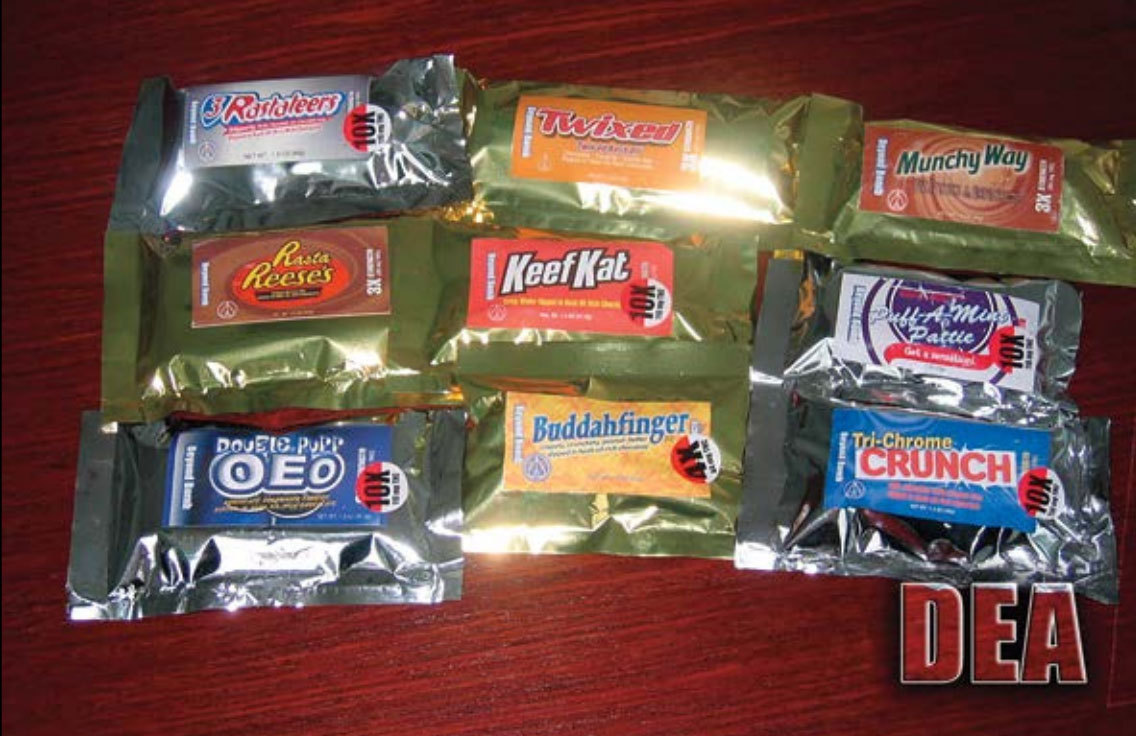'Twixed' and 'Munchy'? Candylike Marijuana Could Endanger Kids

New foods that look like candy but contain marijuana can now be bought legally in some U.S. states, but these products pose health concerns for children, researchers argue.
In the United States, candylike marijuana products first emerged in medical marijuana dispensaries, and have become popular since the legalization of marijuana in several states, said Robert MacCoun, a professor at Stanford Law School. The products, which have names like Twixed and Munchy Way, can be bought legally in Colorado, Washington, Alaska and Oregon.
Because many of these products are packaged to mimic popular candies, they may be attractive to kids, MacCoun said. "There's the concern that young children will find these products and eat them, thinking they are ordinary sweets," MacCoun told Live Science. "This can be a very traumatic experience, and there are even some indications it can be physically dangerous for young children," he said. [Where Americans Smoke and Grow Marijuana (Maps)]
A 2013 study found that after restrictions on medical marijuana possession in Colorado were eased, there was an increase in the number visits related to ingestion of marijuana that kids made to emergency departments. Most of those visits involved marijuana food products.
In addition, some edible marijuana products contain four or more times the amount of THC (the active ingredient of marijuana) that is considered safe to consume in a single serving, MacCoun said.
"At high doses, THC can produce serious anxiety attacks and psychoticlike symptoms," MacCoun said. Marijuana is also metabolized differently when it is ingested as opposed to smoked, with ingested marijuana taking longer to have an effect, and producing possibly more severe effects, MacCoun said.
Finally, there is a concern that the availability of these more child-friendly marijuana products could make it more likely that young people try the drug, or try it at younger ages, although there is little direct evidence of this yet, MacCoun said
Get the world’s most fascinating discoveries delivered straight to your inbox.
To reduce these potential health hazards, there should be strong restrictions on the formulation and packaging of the products, and such restrictions should be implemented when states legalize medicinal or recreational use of marijuana, MacCoun and his colleague Michelle Mello, also a professor at Stanford Law School, wrote in the March 12 issue of the New England Journal of Medicine.
Colorado and Washington state both require child-resistant packaging for edible marijuana products, and also require that the products be labeled with the serving size and a warning to "keep out of reach of children." These are common-sense measures, but aren't enough to fully protect children, MacCoun and Mello said.
More needs to be done to reduce the likelihood that people will confuse the products with nonmarijuana products, and to ensure that the products' dosing is consistent, they said.
"A package should have a predictable standard dose [and] adequate warning labels, and it should not look like candy or a cola drink," MacCoun said. "Adults who wish to use these products are capable of dealing with packaging that doesn't resemble ordinary edible sweets."
MacCoun added, "We are not arguing for prohibition, but for regulation." He noted that an advantage to having legalized marijuana is that it allows for regulations that wouldn't be possible if the drug were outlawed.
Follow Rachael Rettner @RachaelRettner. Follow Live Science @livescience, Facebook & Google+. Original article on Live Science.

Rachael is a Live Science contributor, and was a former channel editor and senior writer for Live Science between 2010 and 2022. She has a master's degree in journalism from New York University's Science, Health and Environmental Reporting Program. She also holds a B.S. in molecular biology and an M.S. in biology from the University of California, San Diego. Her work has appeared in Scienceline, The Washington Post and Scientific American.


